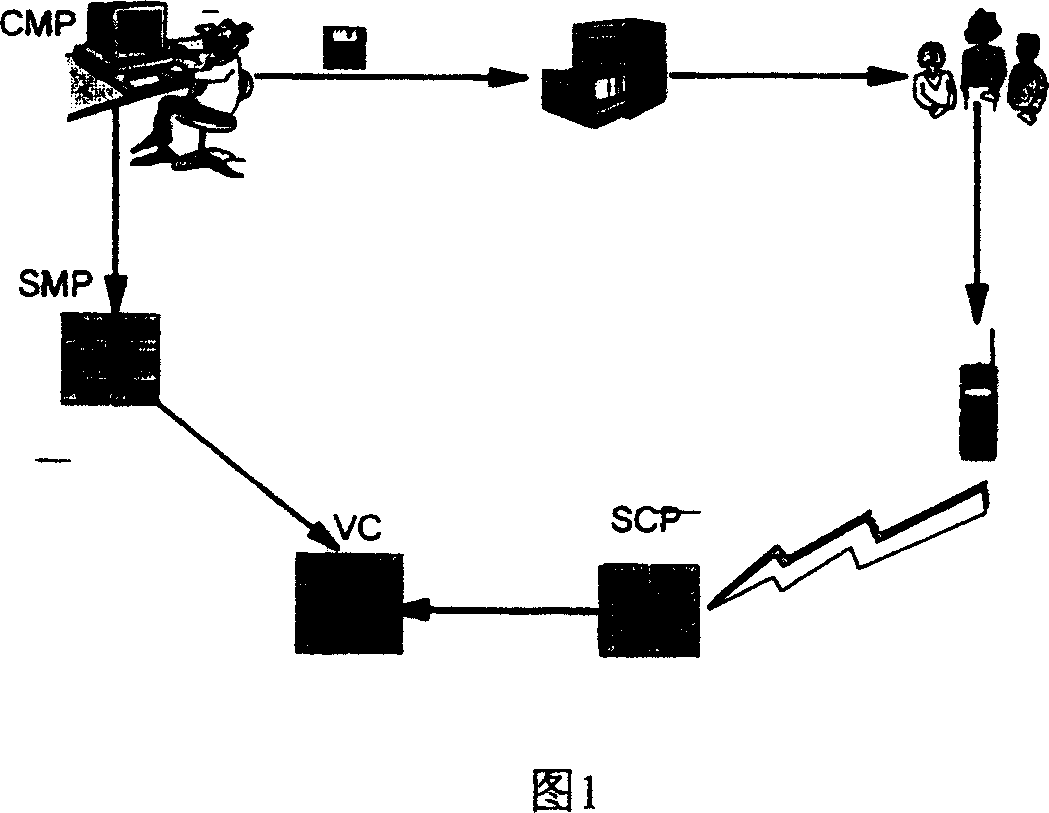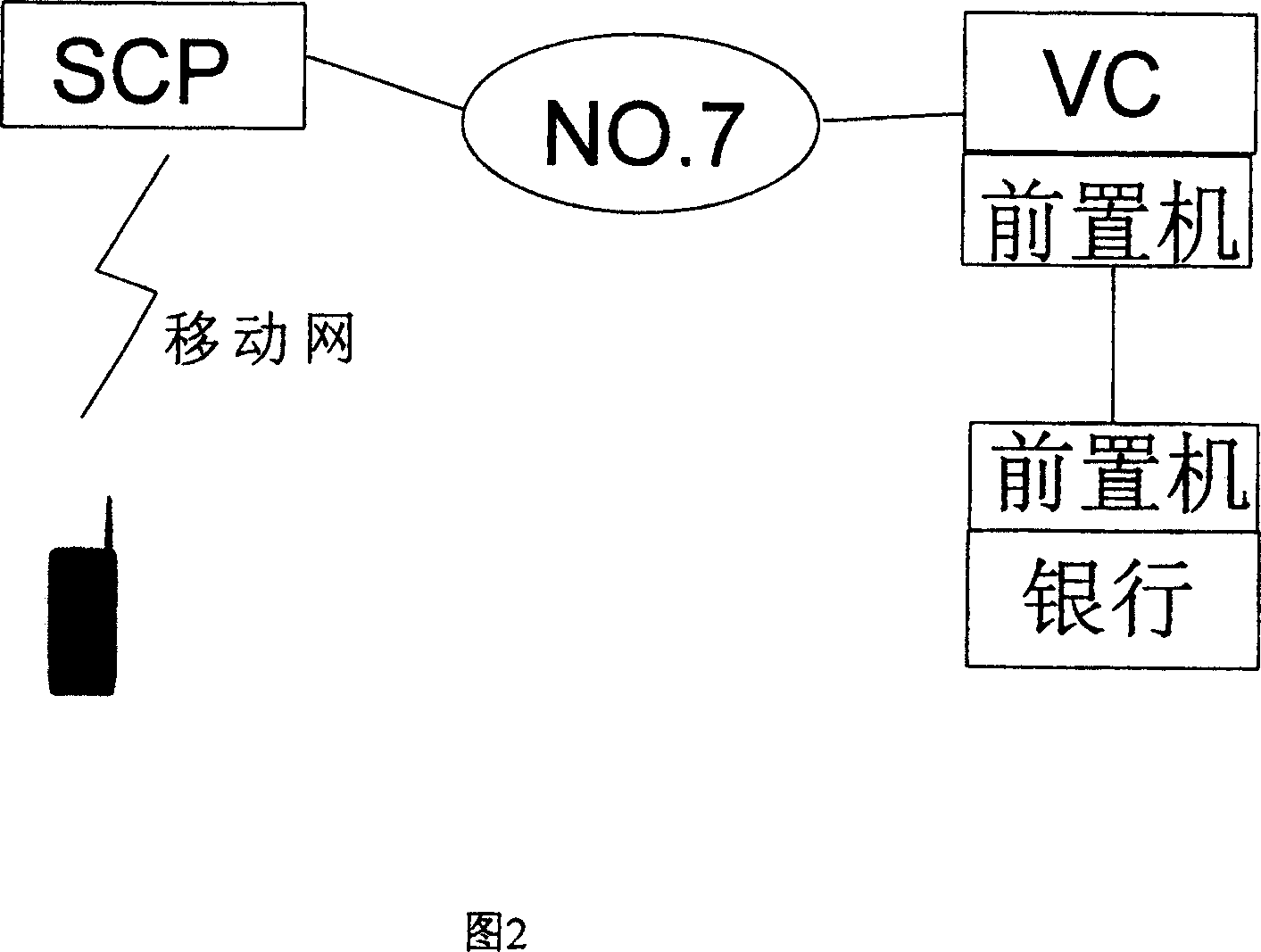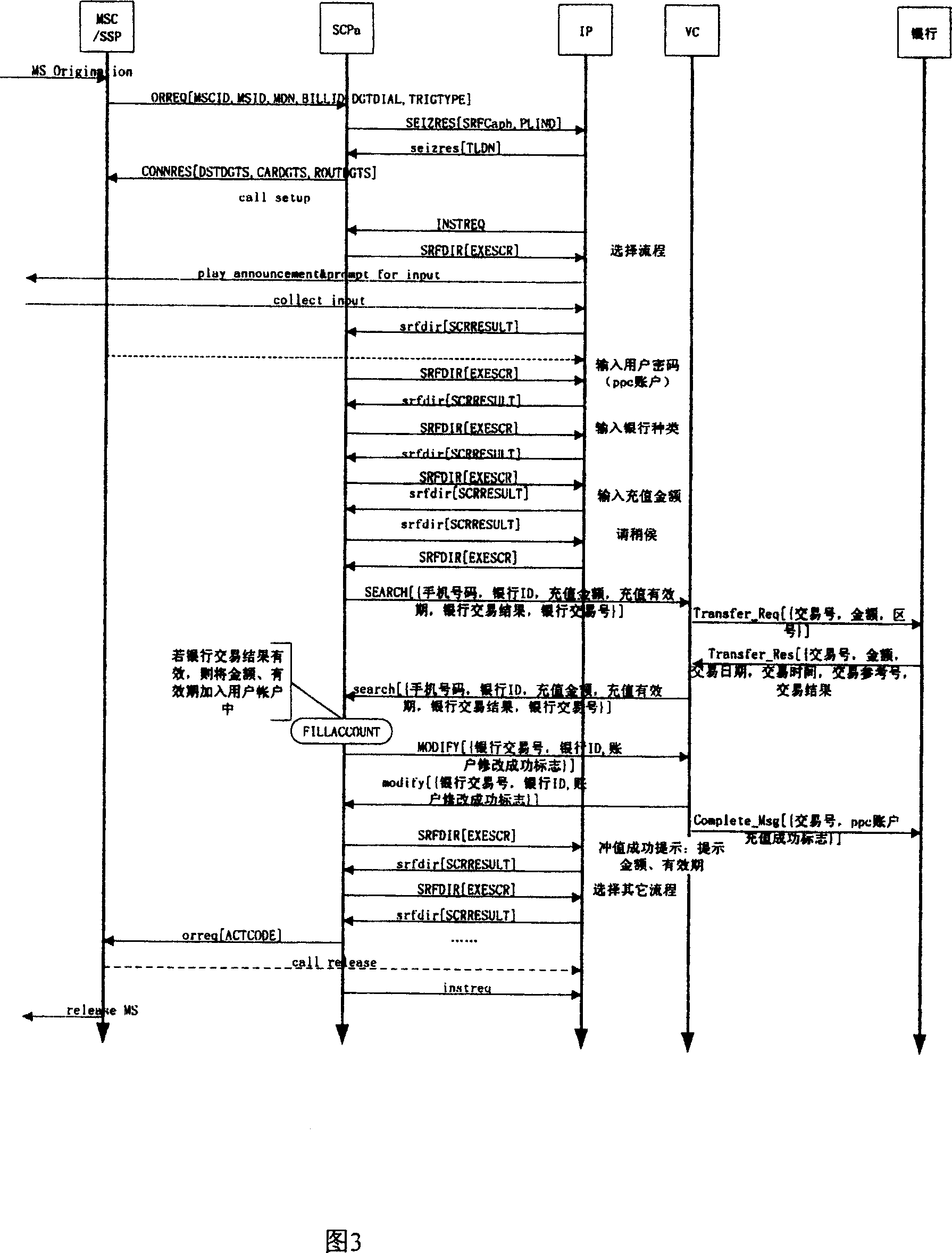Method for adding value to telecommunication service card and its devices
A technology of telecommunication services and recharge methods, applied in telephone communication, electrical components, complete banking systems, etc., can solve problems such as unused or low utilization rate, waste, etc.
- Summary
- Abstract
- Description
- Claims
- Application Information
AI Technical Summary
Problems solved by technology
Method used
Image
Examples
Embodiment 1
[0037] The schematic diagram of its networking is shown in Figure 2. In this example, the service exchange point SCP and the recharge card data processing center VC are two entities that are set up separately, and they interact through No. 7 signaling. Sometimes for security considerations, front-end computers can also be set up in VCs and banks. In order to achieve the purpose of the present invention, it is also necessary to expand the corresponding capabilities on the SCP and / or VC side, including the ability to distinguish recharge types, transfer request functions, recharge status notification capabilities, and response capabilities to recharge status queries. Banks The recharge function can be realized.
[0038] A typical recharge process is shown in Figure 3. In the figure: MS means "Mobile Subscribe", ORREQ means "initial authentication", Seizers means "resource application", ConnectRES means "connection resource", INSREQ means "structure request", srfdir means "playing in...
Embodiment 2
[0084] The network is shown in Figure 10. The difference from the first embodiment is that SPC and VC are co-located, which is called the service control and recharge card data processing device SPC / VC. The difference between the recharge process in this way and the first embodiment is that there is no signaling operation between SCP and VC, and the processes between other entities are the same. Here is an introduction to its normal process: (Figure 11)
[0085] 1) SCP / VC interacts with users;
[0086] 2) SCP / VC sends a transfer request (Transfer_Req) to the bank: SCP / VC sends a transfer request to the bank after processing the corresponding event.
[0087] 3) The bank responds to the SCP / VC with the transfer result (Transfer_Res): The bank processes the transfer request sent by the SCP / VC through its front-end program, and responds to the SCP / VC according to the transfer result. The specific result is: ("3", the bank account recharge and transfer successfully; "5", the transfer...
Embodiment 3
[0091] The networking mode is shown in Figure 12. This mode is to consider the case of not using VC but only using SCP. The recharge process is shown in Figure 13. There is no difference between the recharging process in this way and the way 2 in signaling. The only difference is: because the SCP entity does not have the VC function, in the internal processing of the SCP, the SCP needs to complete all the functions of the SCP and VC, including managing user information. And maintain recharge information and logs. The following describes its normal process:
[0092] 1) SCP interacts with users;
[0093] 2) SCP sends a transfer request (Transfer_Req) to the bank: SCP sends a transfer request to the bank after processing the corresponding event.
[0094] 3) The bank responds to the SCP with the transfer result (Transfer_Res): The bank processes the transfer request sent by the SCP through its front-end program, and responds to the SCP according to the transfer result. The specific ...
PUM
 Login to View More
Login to View More Abstract
Description
Claims
Application Information
 Login to View More
Login to View More - R&D
- Intellectual Property
- Life Sciences
- Materials
- Tech Scout
- Unparalleled Data Quality
- Higher Quality Content
- 60% Fewer Hallucinations
Browse by: Latest US Patents, China's latest patents, Technical Efficacy Thesaurus, Application Domain, Technology Topic, Popular Technical Reports.
© 2025 PatSnap. All rights reserved.Legal|Privacy policy|Modern Slavery Act Transparency Statement|Sitemap|About US| Contact US: help@patsnap.com



